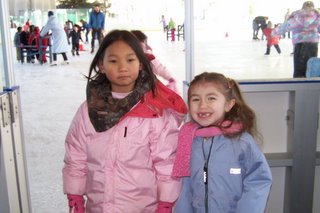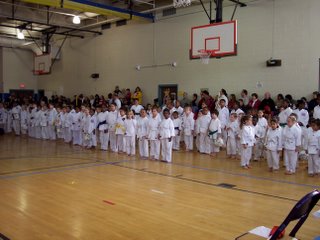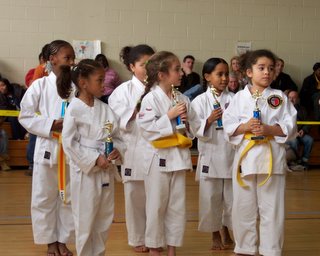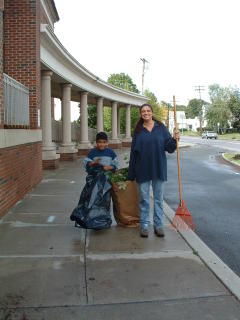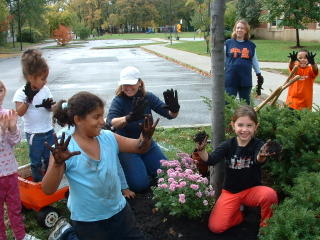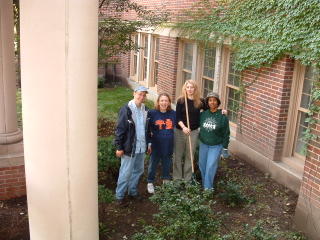May Newsletter:Last of the Year
Principal's Message:
Reading and Writing experiences continue to be an area of priority in our school. In April we had a remarkable response to A.S.H Family Reading Night. Once again I want to thank Mr. Charles Touhey for his involvement in practices that acknowledges the need for multicultural literature. On May 17th the Reading Committee planned READ THE DAY AWAY encouraging teachers to build literacy-based activities into all curricular areas. Mr. Touhey is scheduled to meet with teachers after school to discuss diversity and education. Below is a questionnaire for you to take as a parent…see how you do.
Confident Reader Quiz
Are You Helping Your Child Be A Confident Reader?
How are you helping your child build confidence in her reading skills? In the quiz below, give yourself five points for something you do often, zero points for something you never do—or any score in between.
____ 1. I ask my child to read out loud to me to build skill and confidence.
____ 2. I ask my child questions about what she is reading. She gets to be the expert
and share what she has learned.
____ 3. I encourage my child to learn new words by sounding them out and looking
them up in the dictionary.
____ 4. I make time every day to read with my child. Practice builds confidence.
How Did You Score? Fourteen points or more means you’re helping your child become a confident reader. Seven to thirteen is average. Below seven? Try some of the ideas in the quiz.
Helping Children Deal with Mistakes
Everyone makes mistakes every day. Sometimes people “catch” you at it, sometimes they don’t but it’s how you deal with those goofs that is important. Children who are mortified whenever they make a mistake, whether on a school assignment or socially, develop poor self-images that can haunt them through life. Here are a number of ways you can help your child deal with mistakes and criticism.
“I”, not “you”: The best way to make criticism more palatable is to rephrase it to reflect how the situation makes you feel, instead of casting blame on the child. Compare these:
“You’ve got to stop making all these sloppy mistakes. You’ll never get good grades if you don’t shape up.”
“I get very frustrated when I see sloppy mistakes in your homework. It makes me feel that you don’t care about doing a good job.”
Look for Positives: Too often busy parents take time only to spot and correct their child’s mistakes. You can make the sting of criticism easier to handle if you offset criticism with plenty of positive comments. For example, if you see your child reading a book, say, “It’s great to see how much you enjoy reading. Tell me about the story.”
Criticize the Action, Not the Person: This may be a big switch from what may parents were used to as children, but you can help your children’s self-esteem by directing your anger at what they did rather than them. Say, “Breaking that glass and not telling anyone about it was wrong. Next time, I want you to be honest when something like that happens.”
Use Kind Sarcasm: Kind is the important word here. It can be tempting to be sarcastic, especially in criticizing older children. But sarcasm delivered in a warm, joking way is a great way to deflect embarrassment. Let’s say Josh comes downstairs, ready for school, without realizing that he still has his pajama shirt on. You could just order him back to change, or you could help him laugh at his mistake: “Are you starting a trend, Josh? Next week, I bet all the fourth graders will be wearing their pj’s to school.”
You can model the use of kind sarcasm by applying it to your own mistakes. The next time you try a new dessert recipe and it’s a flop, ease the situation by saying something like, “I’m not sure, but somehow I think that this isn’t going to win the next Pillsbury Bake-Off.”
Teach Children to Laugh at Themselves: Everyone does things that make them feel humiliated, like falling clumsily on the ice in front of your friends, or erasing a word so vigorously that it tears a hole in the paper, or completely missing the ball when playing soccer or tennis. By teaching children to laugh and not get upset at their foibles, you’ll help them realize that some mistakes can be funny and should not be taken seriously.
Mistakes are part of life. So is criticism. Help your child to handle both.
Newsletter coordinator and writer needed for the 2006-2007 academic year.
If you would like to get involved this is a great opportunity for keeping informed and getting to know the ASH community. The time commitment is about 5-8 hours a month. Coordinating the newsletter involved keeping in touch with members of the PTA, attending PTA meeings, soliciting contributions from the School nurse, the principal and occasionally from teachers and students. This year we decided to post the newsletter on the Web, but that is not a requirement. Please contact David Greene or Sarah Averill at (518) 463-6235 if you would like to take over the website and/or the newsletter.
Health Alert: Deer Ticks and Lyme Disease on the Rise
Lyme Disease is caused by bacteria transmitted by deer ticks. People who spend time in grassy and wooded areas are at increased risk. Even in suburban areas where deer populations have increased significantly in the last several years, people are getting lyme disease. Get in the habit of chekcing yourself and your children and watch for the signs and symptoms of lyme disease.
Symptoms of Lyme Disease:
Early Symtoms usually show up within 30 days of exposure to a tick bite. They include:
- A rash resembling a bull's eye or a solid patch, about two inches in diameter. This occurs in 60 to 80% of cases.
- Chills, fever and headache, fatigue, stiff neck, muscle and/or joint pain and swollen glands.
- later symptoms include severe fatigue, a stiff aching neck, tingling or numbness in the extremities or facial paralysis.
- Additional symptoms can include painful arthritis, swollen joints, heart and central nervous system problems.
Prevention:
- Wear light-colored clothing so that you can see ticks more clearly. Tuck shirts into pants, and pants into socks.
- Check clothing and skin after every 2-3 hours of outdoor activity.
- Brush off ticks from your clothes before they become attached to skin.
- Using a pair of tweezers, grasp the tick near the mouthparts, as close to the skin as possible.
- Do not squeeze, crush or puncture the body of the tick. Pull the tick in a steady, upward motion away from the skin.
- Do not attempt to remove ticks using petroleum jelly, kerosene, lit cigarettes, or other home remedies because these may increase the risk of contracting a tick-borne disease.
- After removing the tick, disinfect the bite site with soap, rubbing alcohol, or hydrogen peroxide, and wash your hands.
- Record the date and the location of the tick bite.
- If a rash or flu-like symptoms appear, contact your helath care provider immediately.
- Contact your health care provider if you have concerns about incomplete tick removal.
Motivational Productions: Code of Honor
Rescheduled for June 6, 2006 at 9:30 and 10:30 am.
Rummage Sale a Huge Success!
Thank you Emily Lee for coordinating the Rummage Sale -- and raising nearly $1,000 for the ASH PTA!
Square 1 Art
The Square 1 Art Fundraise also raised approximately $1,200 for the PTA. The late orders will be distributed by the middle of May. If you have problems with your order or are missing items, please contact Sarah Averill, preferably by e-mail at sarah.averill@gmail.com. Thank you to everyone who helped, particularly Anita Weklar, Amber Jones, Liz Heyward, and Maria Harple, whose advice proved very helpful.
Couch Potatoes or Active Kids
Do you feel like a couch potato? If you do you probably watch too much T.V. I did and so do millions of other kids. Some kids even see their best friends outside, then see their favorite show on and stay inside. Kids watch too much T.V.
In a recent study, I found many kids watch more than an hour of TV a day, for instance Anne-Marie DeRusso, age 10, said, "I watch 3 hours of T.V. after I read." Christian Dixon, age 9, said, "I watch 4 hours of T.V. a day but sometimes I play baseball." I asked kids if they felt they watched too much T.V.; most said yes. So what can kids do to break the T.V. habit?
I have some solutions to solve the problem of watching too much T.V. One solution is you can get involved in sports teams or clubs. Things like baseball, basketball, or maybe a reading club could be good. You could ride your bike or maybe race a friend or sibling. These are just some of the thngs you can do instead of watching T.V.
Some kids say they don't know how to start a reading club. Well, let me tell you, you're not helpless!
To get started, ask your librarian if they have a reading club. If not, ask if you can use a space in the library for a club. Then get some other kids together, pick a president, a vice president, and a treasurer. At every meeting charge 25 cents; this will be for snacks. Finally talk with the group and plan what you're going to do at each meeting. There, now you have a reading club. Was that so hard?
Some kids say, "We want to do something else but we're too tired!" so I say, "Go to bed earlier -- that's not excuse." The point is kids watch too much T.V. because they let the T.V. control them. You control the T.V. -- the T.V. does not control you. Now you know what to do, so get out from in front of the T.V. and get outside!
